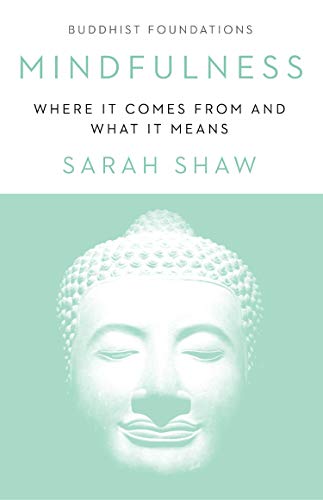
As a Chinese Buddhist layman, I have no strong opinion about the extensive plethora of mindfulness material out there. Mindfulness has long become a household word in many cultures. Most of the material about the subject, both offline and online, is written in good faith, with a genuine aspiration to make mindfulness more familiar among readers. Too many books and articles, however, are written in a contextual vacuum, as if mindfulness is a historical concept and phenomenon akin, say, to engaging in a sport. Sports history is rich and vibrant, but one does not need to know any of it to play. Mindfulness is not quite the same.
At the same time, it is precisely when a word, concept, or idea such as mindfulness is uprooted from its original context that it truly becomes a marketable commodity. This does not always carry negative connotations. Ven. Analayo, an expert in Buddhist history and philosophy, points out in a recent article in the journal Mindfulness:
There is indeed a need to beware of the current hype around mindfulness and of its commercialization, and even more so of its employment in ways that run counter to basic Buddhist ethics. However, drawing attention to such issues would be more effective if it could embody the quality that it wishes to foster: mindful presence. This requires paying attention to the complexity of the processes involved, rather than opting for a simplistic black-and-white view and consequent othering of all those who do not subscribe to one’s personal agenda. It will hardly do justice to the cultivation of mindfulness if the world is divided dualistically into the good ones, who oppose the destructive forces of neoliberalism, and the bad ones, a category arrived at by lumping together everyone else . . . (Analayo 2020, 477)

What is at stake is keeping definitions of mindfulness as open and flexible as possible, while not losing its Buddhist anchors. This is the intellectual project of Sarah Shaw’s new book Mindfulness: Where It Comes From and What It Means (Shambhala Publications 2020), which outlines the history and contexts of mindfulness in easy and accessible language. It is an introductory work as part of the Buddhist Foundations series released by Shambhala. The book provides a crisp and simple presentation that reinforces its style as an eloquent introductory book. Early on, Shaw avoids the false choice between being simply against or for mindfulness. Instead, Shaw ties mindfulness to the Noble Eightfold Path. This is an excellent refutation of whoever wants to mistakenly separate mindfulness from its Buddhist, ethical, or spiritual roots:
When considering the history of mindfulness, we always need to bear in mind the eightfold path. It animates all kinds of Buddhisms and informs the ways in which each one of them develops and is sustained. These factors are distinct but completely interdependent too. None of the other seven path factors can arise without mindfulness. One cannot practice right livelihood, a way of life that does not harm oneself and others, without mindfulness; one cannot perform right or appropriate action without it either. Mindfulness is one element of eight domains in which the path can be brought to life. (Shaw 2020, 7)

The book is divided into 16 chapters, with a fairly standard arrangement of themes: from the very earliest image of mindfulness in the Pali Canon as a finely tuned musical instrument to modern interpretations of mindfulness (the penultimate section before the conclusion). The author’s core message is that Buddhists and non-Buddhists alike should not put too much emphasis on articulating a hard definition of mindfulness, even though certain qualities give a more accurate flavor to the Buddhist ideal: it is “flexible, intuitively ethical, and attentive and respectful of all beings, including oneself.” Beyond these three characteristics, Shaw advises that rigid frameworks are not helpful and box mindfulness into conceptual silos. These prisons hinder the inherent adaptability of the word in many different historical, social, cultural, and political circumstances:
. . . this book has attempted to outline the ways in which mindfulness has been described and encouraged in Buddhism, thus helping so many find health and balance. While there are definitions, there is no need to be rigid about them, a means whereby it is immediately lost. The application of smṛti/sati to present events was a transformatory innovation. The Buddha taught how to find an awareness that could move easily within, without, and both within and without, as a means of freeing the practitioner to find a “foundation” within any given situation. He identified a point of equilibrium in the midst of multiple conditions. (Shaw 2020, 189)
Crucially, in Buddhism, the evolution of mindfulness across Asia has evolved in accordance with concepts developed in specific traditions. For example, the luminosity of the mind profoundly shaped Indian Buddhist notions of mindfulness: “Pali Buddhism had interpreted this as a quality of mind that might be present in passive form in deep sleep or at the end of each thought process and reawakened through the practice of skillful consciousness and meditation.” (Shaw 2020, 112) Others, like the Yogacara tradition, expounded notions such as the tathatagarbha and the storehouse consciousness, which affected how mindfulness could be cultivated through those lenses. (Shaw 2020, 113–14) Replicate this for all three vehicles and the diverse philosophical schools of Buddhism, and it becomes clear why Western (or more broadly, contemporary) articulations of mindfulness have perhaps been critiqued unfairly to some extent. As far as Shaw is concerned, the broader and less loaded the definitions, the better. (Shaw 2020, 180– 81)
This is a short, accessible, and digestible book that arms the reader with a wide-ranging knowledge of mindfulness. It is a worthy addition to Shambhala’s Buddhist Foundations series, and Shaw’s good work does justice to the centrality of mindfulness in the heritage of Buddhism, both in ancient times and in today’s world.
References
Bhikkhu Analayo. 2020. “The Myth of McMindfulness.” Mindfulness, 11, 472–79: https://doi.org/10.1007/s12671-019-01264-x












